-
The BladeForums.com 2024 Traditional Knife is available! Price is $250 ea (shipped within CONUS).
Order here: https://www.bladeforums.com/help/2024-traditional/
You are using an out of date browser. It may not display this or other websites correctly.
You should upgrade or use an alternative browser.
You should upgrade or use an alternative browser.
French regional knives...
- Thread starter lonestar1979
- Start date
- Joined
- Jun 4, 2015
- Messages
- 6,140
No, no link with the Laguiole, even the early pattern.I have been eyeballing this Catalan knife because of it seems to have some sort of shared ancestry with the early Laguiole. I’m pretty sure it is just a friction folder, though.
Thanks. I figured you would know, and was waiting to see what you had to say about it.No, no link with the Laguiole, even the early pattern.
- Joined
- Jun 4, 2015
- Messages
- 6,140
According to Lemasson the exact origin of the Lag is still unknown and several path have explored, including Spain, but rejected. For centuries, Thiers supplied unexpensive knives to Spain and there is more similarity with the Sauveterre, a pattern dating of the XIIIth century and a town just 60km South of Laguiole.Thanks. I figured you would know, and was waiting to see what you had to say about it.
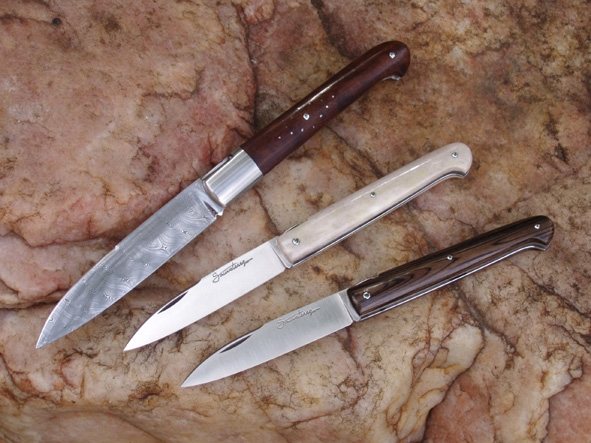
Are those different from the “Ancestral” @cigarrodog posted earlier?According to Lemasson the exact origin of the Lag is still unknown and several path have explored, including Spain, but rejected. For centuries, Thiers supplied unexpensive knives to Spain and there is more similarity with the Sauveterre, a pattern dating of the XIIIth century and a town just 60km South of Laguiole.

- Joined
- Jun 4, 2015
- Messages
- 6,140
No several patterns are very similar with just details to differ. The main difference was the place they were built. From what I understand, first came the Yssingeaux,Are those different from the “Ancestral” @cigarrodog posted earlier?
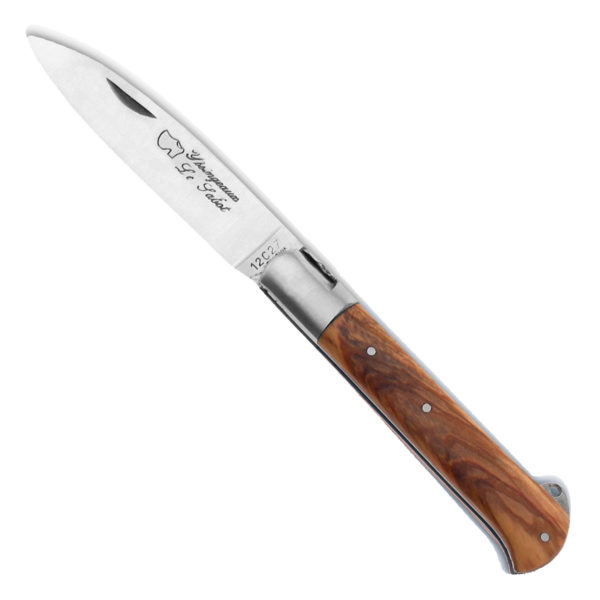
then the Issoire,
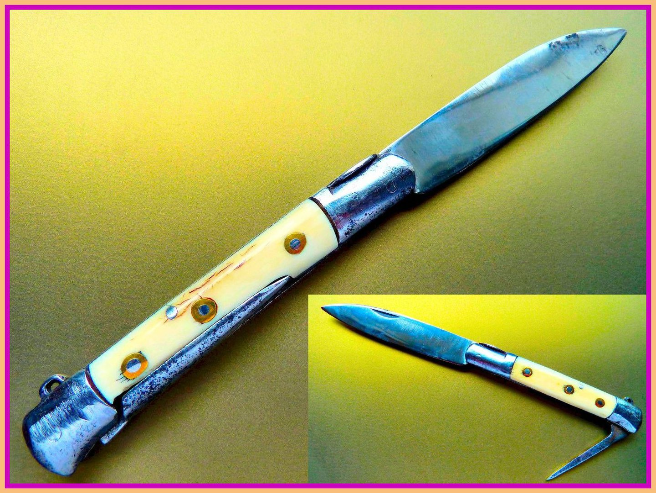
and the St Martin
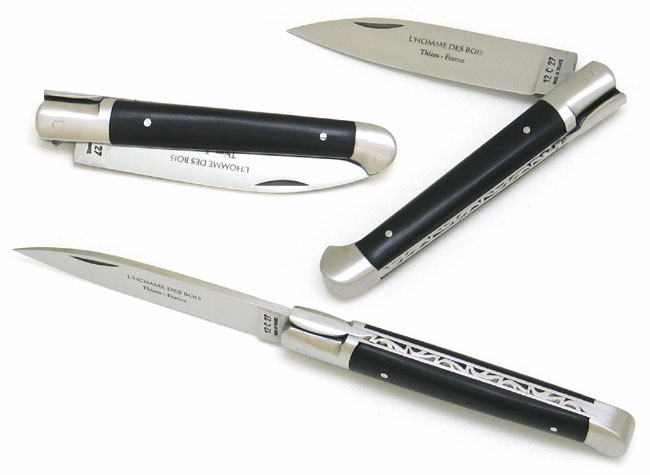
and the straight Laguiole.
- Joined
- May 20, 2018
- Messages
- 13,660
Oh, man, I might have to get them all!No several patterns are very similar with just details to differ. The main difference was the place they were built. From what I understand, first came the Yssingeaux,

then the Issoire,

and the St Martin

and the straight Laguiole.
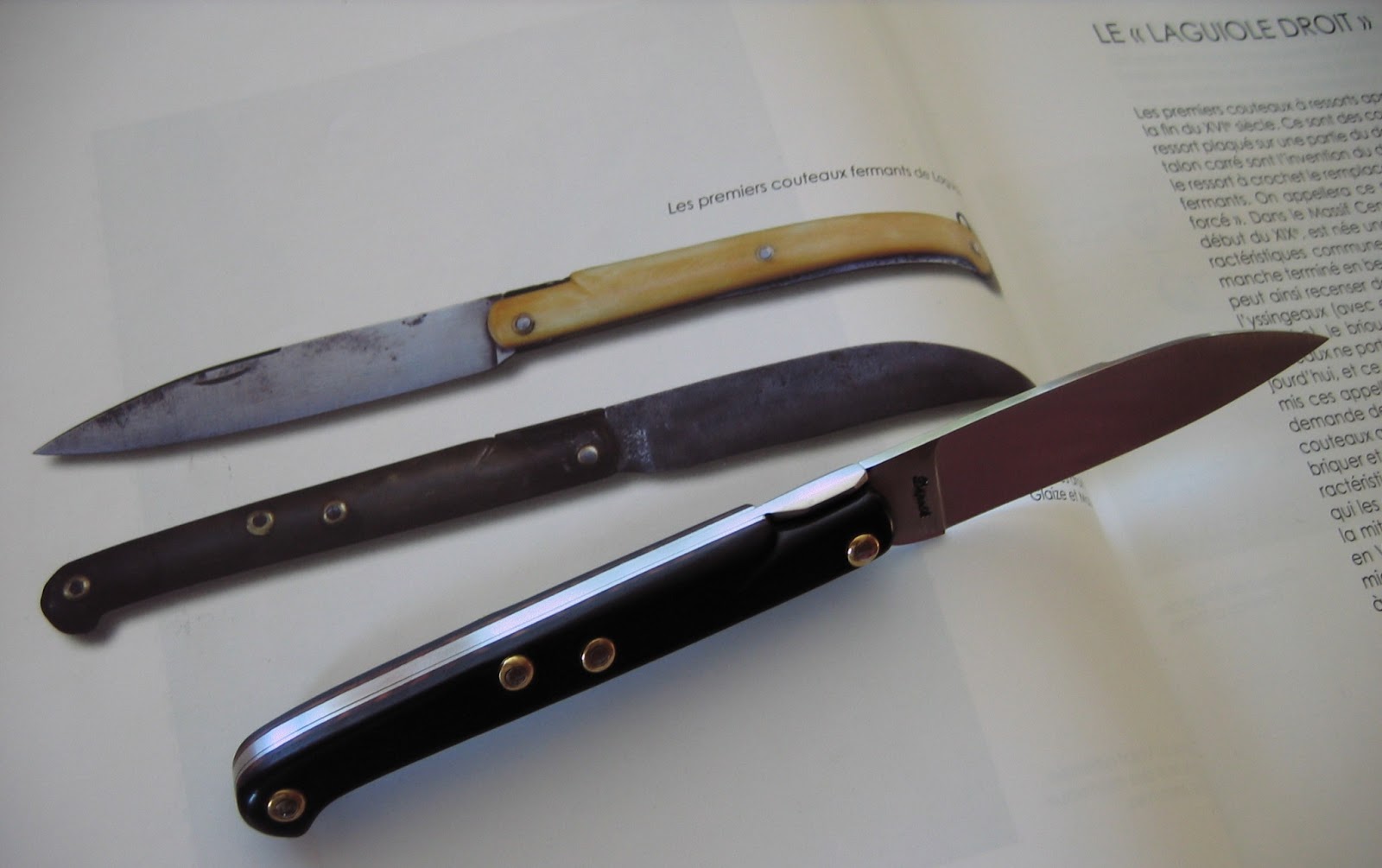
Is that ebony or black horn tip on the St Martin?
- Joined
- Jun 4, 2015
- Messages
- 6,140
Vince, this is ebony, but many other materials are available, including black horn tip. The St martin is 11cm long,Oh, man, I might have to get them all!
Is that ebony or black horn tip on the St Martin?
while the Yssingeaux is only 10,5cm.
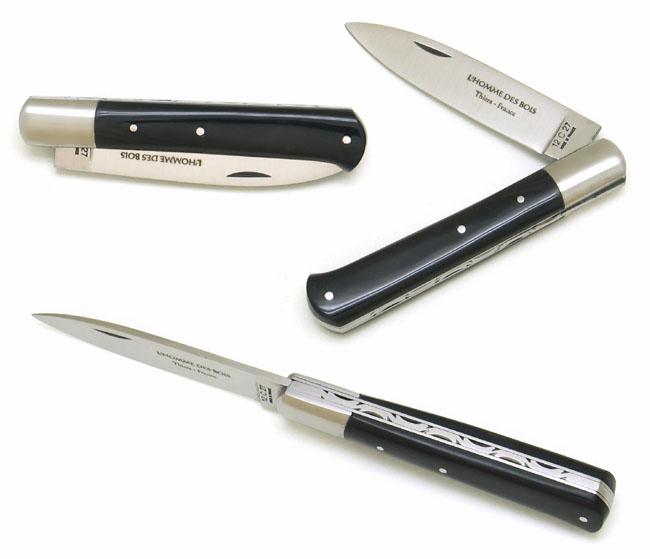
- Joined
- Jun 4, 2015
- Messages
- 6,140
The first Issoire was an expensive knife, most time with ivory handles and oramented by several pins. The awl is called "Marchand de vin" (wine seller) because it was used to remove the plugs on the barrels.
- You can see some old knives of different makers here.
- And here (sorry no translation, but pictures speak).
The St martin is often refered as "ecclesiastic's knife".
But, the mystery darkens somehow, when you read the Journal of Thérias (- Thérias of later Parapluie fame- many thanks to the Confrérie du Couté de Thié) a repertory of sales, orders, etc written between 1887 and 1910, where he refers to a façon Brioude, again different of the Yssingeaux. One wonders if this denoted a knife made in or for the Brioude country or imitating those made by a certain Brioude, cutler... No picture alas
Re Pallarès : a picture taken from Jean-Jaques Perret's Art du Coutelier, published 1771.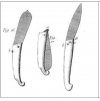
- You can see some old knives of different makers here.
- And here (sorry no translation, but pictures speak).
The St martin is often refered as "ecclesiastic's knife".
But, the mystery darkens somehow, when you read the Journal of Thérias (- Thérias of later Parapluie fame- many thanks to the Confrérie du Couté de Thié) a repertory of sales, orders, etc written between 1887 and 1910, where he refers to a façon Brioude, again different of the Yssingeaux. One wonders if this denoted a knife made in or for the Brioude country or imitating those made by a certain Brioude, cutler... No picture alas
Re Pallarès : a picture taken from Jean-Jaques Perret's Art du Coutelier, published 1771.

Last edited:
- Joined
- May 20, 2018
- Messages
- 13,660
Beautiful knives. Good sizes, too.Vince, this is ebony, but many other materials are available, including black horn tip. The St martin is 11cm long,
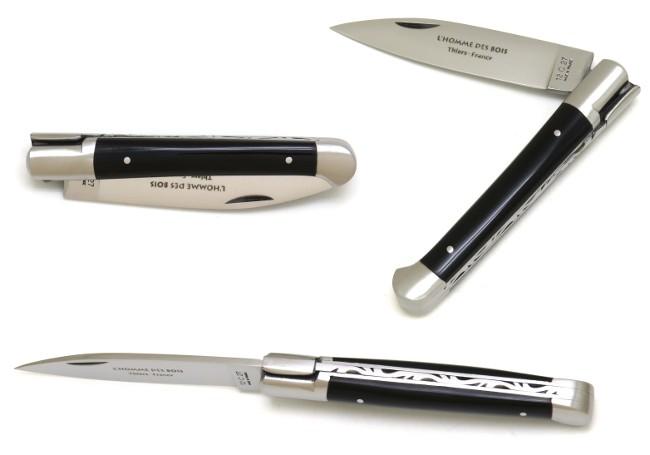
while the Yssingeaux is only 10,5cm.

- Joined
- May 20, 2018
- Messages
- 13,660
Thank you, Alain. I have bookmarked the links so I can review later. Fortunately, I can understand most of the French text--maybe 80-90%.The first Issoire was an expensive knife, most time with ivory handles and oramented by several pins. The awl is called "Marchand de vin" (wine seller) because it was used to remove the plugs on the barrels.
- You can see some old knives of different makers here.
- And here (sorry no translation, but pictures speak).
The St martin is often refered as "ecclesiastic's knife".
But, the mystery darkens somehow, when you read the Journal of Thérias (- Thérias of later Parapluie fame- many thanks to the Confrérie du Couté de Thié) a repertory of sales, orders, etc written between 1887 and 1910, where he refers to a façon Brioude, again different of the Yssingeaux. One wonders if this denoted a knife made in or for the Brioude country or imitating those made by a certain Brioude, cutler... No picture alas
Re Pallarès : a picture taken from Jean-Jaques Perret's Art du Coutelier, published 1771.View attachment 1261938
- Joined
- Jun 4, 2015
- Messages
- 6,140
In fact size varies depending of the maker, same for pins, some are simple nails, other aremore vintage looking.Beautiful knives. Good sizes, too.


Personnally I always have had a soft spot for the St Martin.
To give an idea of how near the patterns/towns are : (Thiers is top North, St Etienne was another big cutlery town, St Martin is somewhere near Limoges, North-East. Distances : Issoire-Yssingeaux, Issoire-Laguiole 120km. Yssingeaux-Laguiole 160km, #3h

Last edited:
Will Power
Gold Member
- Joined
- Jan 18, 2007
- Messages
- 33,581
According to Lemasson the exact origin of the Lag is still unknown and several path have explored, including Spain, but rejected. For centuries, Thiers supplied unexpensive knives to Spain and there is more similarity with the Sauveterre, a pattern dating of the XIIIth century and a town just 60km South of Laguiole.

Tremendous examples!

Thanks, Will
screened porch
Basic Member
- Joined
- Feb 19, 2012
- Messages
- 19,326
I've been thinking about this. You really have a jackknife that goes back to the thirteenth century?the Sauveterre, a pattern dating of the XIIIth century and a town just 60km South of Laguiole.
Some fascinating stuff on that website. A typo on this page left me really confused, though. I couldn’t figure out what an 18th century dude had to do with the Cathars and thought maybe I had lost my ability to understand French.The first Issoire was an expensive knife, most time with ivory handles and oramented by several pins. The awl is called "Marchand de vin" (wine seller) because it was used to remove the plugs on the barrels.
- You can see some old knives of different makers here.
- And here (sorry no translation, but pictures speak).
The St martin is often refered as "ecclesiastic's knife".
But, the mystery darkens somehow, when you read the Journal of Thérias (- Thérias of later Parapluie fame- many thanks to the Confrérie du Couté de Thié) a repertory of sales, orders, etc written between 1887 and 1910, where he refers to a façon Brioude, again different of the Yssingeaux. One wonders if this denoted a knife made in or for the Brioude country or imitating those made by a certain Brioude, cutler... No picture alas
Re Pallarès : a picture taken from Jean-Jaques Perret's Art du Coutelier, published 1771.View attachment 1261938
https://www.lecouteau.info/couteaux-régionaux-traditionnels/les-neo-regionaux/
Then I went to the maker’s website and the same legend is told, but dating it to the 13th century.
Cool knife either way.

I have actually been to Montsegur a couple of times (mentioned in the maker’s website about the knife, which I am not posting a link to here). I realize the ruins there are not the original Cathar castle, but it is still pretty cool, and beautiful countryside.
- Joined
- Jun 4, 2015
- Messages
- 6,140
I agree with you it is most probably a typo. I never found anything related to "Peyrot" (Vidal or else), only to "Peire Vidal" who was a troubadour from Toulouse, whose adventurous life took him to Malta on a corsair ship and some pieces are still played these days.Some fascinating stuff on that website. A typo on this page left me really confused, though. I couldn’t figure out what an 18th century dude had to do with the Cathars and thought maybe I had lost my ability to understand French.
https://www.lecouteau.info/couteaux-régionaux-traditionnels/les-neo-regionaux/
Then I went to the maker’s website and the same legend is told, but dating it to the 13th century.
Cool knife either way.
I have actually been to Montsegur a couple of times (mentioned in the maker’s website about the knife, which I am not posting a link to here). I realize the ruins there are not the original Cathar castle, but it is still pretty cool, and beautiful countryside.
Neither did I find reference to Najac nor to catharism in his life. Nowhere spoken of any Catalonia, be it French Roussillon or on the other side of Pyrénées.
It is curious that the story told on the site differs so much of what I could read in dictionaries (10 volumes encyclopedic Larousse) or on records and I'd like to see his sources.
With the respect owed to any character and way of life, the least is to take his assertions with a huge grain of salt...
Peire seems to have been quite trendy among troubadours of that era :
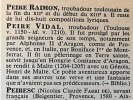
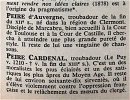
- Joined
- Jun 4, 2015
- Messages
- 6,140
It seems this was made by Jacky BABILON, famous for laser etching on Opinels. Components probably from Thiers. The family included the Gavroche and the Chrisarti. Some sold in hypermarkets under the "Chefs de France" label.Something different for me, a Marjacq in ebony.

I am intrigued by this simple and humble knife as it is unlike anything else I own. I look forward to getting acquainted with her.
kamagong
Gold Member
- Joined
- Jan 13, 2001
- Messages
- 10,966
It seems this was made by Jacky BABILON, famous for laser etching on Opinels. Components probably from Thiers. The family included the Gavroche and the Chrisarti. Some sold in hypermarkets under the "Chefs de France" label.
Thank you for that insight.

